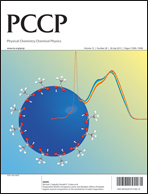Surface plasmon resonance-based fiber optic hydrogen sulphide gas sensor utilizing Cu–ZnO thin films
Abstract
We report an experimental study on a surface plasmon resonance (SPR)-based fiber optic hydrogen sulphide gas sensor with a thin metal oxide (zinc oxide (ZnO)) layer as the additional layer. This zinc oxide layer is grown over the copper layer to support surface plasmons at the metal–dielectric interface at room temperature. The wavelength interrogation mode of operation has been used to characterize the sensor. The thin film of zinc oxide over the copper film was deposited on the unclad portion of the fiber by the thermal evaporation technique. Experiments were performed for the detection of concentrations of hydrogen sulphide gas varying from 0 to 100 ppm around the probe. The unpolarized light from a polychromatic source is launched from one end of the fiber and the corresponding SPR spectrum is recorded at the other end. The recorded SPR spectrum shows a shift in the resonance wavelength on a change in the hydrogen sulphide gas concentration, which is considered as a detectable signal for the characterization of the sensor. Further, the optimization of the performance of the sensor was achieved by varying the thickness of the zinc oxide film. The sensor possesses a very fast response time and high sensitivity. Since the sensor utilizes optical fibers it has additional advantages of remote sensing, online monitoring, light weight and low cost.


 Please wait while we load your content...
Please wait while we load your content...